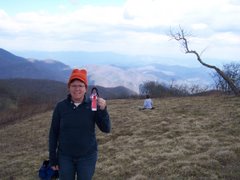Featured Site
|
The 221 square mile Arthur R. Marshall Loxahatchee National Wildlife Refuge was established in 1951. Named after Everglades scientist Arthur R. Marshall, the refuge is the northernmost portion of the Everglades. At the refuge, people can enjoy marsh and cypress swamp habitats and see many different kinds of animals and plants. Last year, the refuge had approximately 325,000 visitors.
The Refuge also offers introductory in-service teacher workshops and hosts nationally acclaimed workshops including Project WILD, Aquatic WILD, Fire In Florida’s Ecosystems, Project Learning Tree, and Indoors and Out: Connecting Classrooms to Nature in partnership with the Preservation Foundation of Palm Beach and the Marshall Foundation.
|
Where the Glades Meets the Classroom
Regional EE mini-grants take root
As a recipient of one of the Florida Department of Environmental Protection's regional EE mini-grants, the Arthur R. Marshall Foundation recently invited Jupiter Middle School teachers to join efforts with the Foundation and the ARM Loxahatchee National Wildlife Refuge to explore ways to teach about Everglades restoration.
The Foundation's innovative, place-based learning opportunities will deepen student experiences at the refuge though hands-on science. The award funds three days of professional development for teachers, who will participate in a service learning project and bring 120 students from Jupiter Middle School to the Loxahatchee twice during the school year. Central to this partnership is the use of the Hands-on-the-Land website to share site information, instructional resources, and eventually project results.
Established in 1998, the Foundation has quickly grown to become a leader in environmental education and is the only non-profit in South Florida offering hands-on learning opportunities in Everglades restoration and preservation. Since the organization's founding, their message has reached more than three million people through many programs and events, as well as via partnerships with other environmental and community groups.
This project will inspire teachers and students with a greater understanding of the Everglades ecosystem, the interdependent nature of life, and the role that clean water plays in maintaining a healthy ecosystem. This project will also support Jupiter Middle School's new outdoor classroom.
Contact: Serena Rinker (serena_rinker@fws.gov)
http://www.fws.gov/loxahatchee
http://www.artmarshall.org/
http://www.fws.gov/loxahatchee
http://www.artmarshall.org/
STEM Opportunity: NIMBioS Education Module
Mathematics is an under-appreciated but important tool for the life sciences, from mathematically modeling biological processes to making sense of real biological data. This activity was designed for a Girls in Sciencecamp at the Great Smoky Mountains National Park at Tremont. The camp gives these girls the opportunity to become familiar with the natural world by hands on research in the park.
Biodiversity is important for ecosystem health and productivity. Greater biodiversity provides greater opportunities to find new organisms that can be important food sources or new medicines for people around the world. Also, high biodiversity makes ecosystems more resilient; with increasing threats to species from global climate change or in the event of a catastrophe, more species can mean a greater potential that some organisms will have the necessary traits to survive. But what exactly is biodiversity? How does one go about measuring whether biodiversity is greater in one place compared to another?
More information: http://www.nimbios.org/
Contact: Kelly Sturner (sturner@nimbios.org)
Contact: Kelly Sturner (sturner@nimbios.org)
Project Archaeology:
Investigating Shelter
Investigating Shelter is a supplementary science and social studies curriculum unit for grades 3 through 5 developed by Project Archaeology, a BLM partner. Students can seamlessly integrate science (STEM) with literacy, mathematics, social studies, and history. The curriculum consists of nine comprehensive lessons guiding students through the archaeological study of shelter including a toolkit of archaeological and scientific concepts and a final performance of understanding.
More Information: https://projectarchaeology.
Upcoming Events
| Green Engineering in the Elementary Classroom Tuesday, January 28, 2013 at 7:00 p.m. EST. | Free Webinar: You must register for EE Week 2014 to participate in this webinar. (http://www.eeweek.org) |
| 2014 National NSTA Conference Boston, MA April 3 – 6 www.nsta.org/conferences/ | Join teachers and scientists for top-notch professional learning opportunities, fresh ideas for your classroom teaching, and chances to learn about what really works from your peers. |
| EE Week 2014 April 13-19 www.eeweek.org | Join a national network of educators and organizations dedicated to increasing the environmental knowledge of K-12 students. |





No comments:
Post a Comment